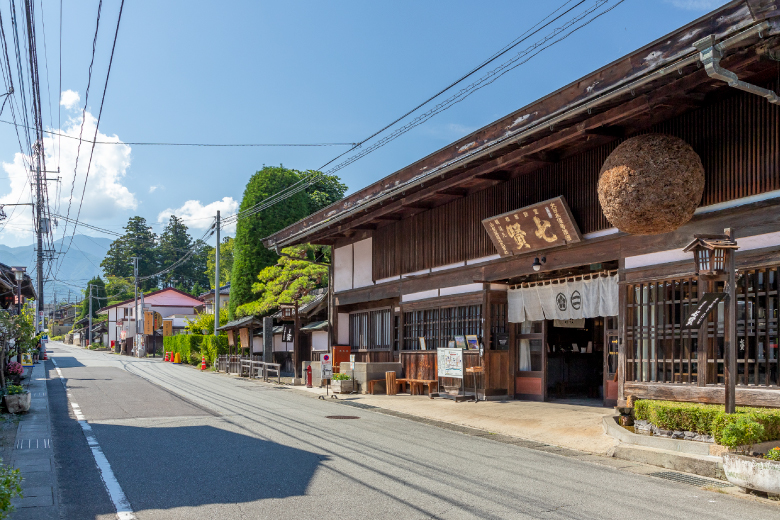Daigahara-shuku was the next station after Nirasaki-juku when traveling from Edo, and the fortieth post station when traveling from Nihombashi. Daigahara-shuku flourished between the Edo Period (1603-1868) and the Meiji Period (1868-1912) with a main lodging (honjin), a sub-lodging (waki-honjin), and 14 inns (hatago). The street of the shuku was about 1 km long and covered with white sand, which created a beautiful landscape with the pine trees planted along it.
Many buildings still have the atmosphere of the old days. The Kitahara Family Residence remains as Yamanashi Meijo, a sake brewery producing a local specialty, Shichiken sake. The interior of one of the inns, named Maruya, was refurbished while the exterior is preserved as it was. A long-established confectionery Daigahara Kinseiken now occupies the building.
Efforts to preserve the historical charm of the landscape resulted in the old Koshu-kaido Road between Daigahara-shuku and Shirasu Town being included in the List of 100 Great Roads of Japan in 1986 and in the 24 Great Landscapes of Hokuto selected by Hokuto City.
From 2001, the Daigahara-shuku Market has been held in the middle of October every year. In 2019, the 19th market was held with 300 stores. In 2020 and 2021, the market was cancelled because of COVID-19.
Many buildings still have the atmosphere of the old days. The Kitahara Family Residence remains as Yamanashi Meijo, a sake brewery producing a local specialty, Shichiken sake. The interior of one of the inns, named Maruya, was refurbished while the exterior is preserved as it was. A long-established confectionery Daigahara Kinseiken now occupies the building.
Efforts to preserve the historical charm of the landscape resulted in the old Koshu-kaido Road between Daigahara-shuku and Shirasu Town being included in the List of 100 Great Roads of Japan in 1986 and in the 24 Great Landscapes of Hokuto selected by Hokuto City.
From 2001, the Daigahara-shuku Market has been held in the middle of October every year. In 2019, the 19th market was held with 300 stores. In 2020 and 2021, the market was cancelled because of COVID-19.
